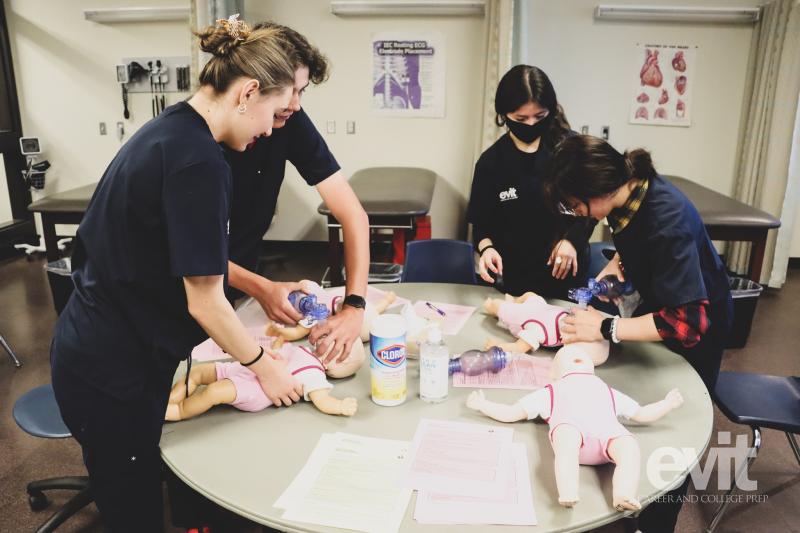Can a medical assistant provide IV infusion therapy?
The ability of a medical assistant to provide IV (intravenous) infusion therapy varies by location and the specific regulations and guidelines set by the medical board or licensing authority in their jurisdiction. In the United States, for example, the rules can differ from state to state, and they may also be influenced by the medical assistant's training, certification, and the specific tasks they are authorized to perform.
Here are some key points to consider:
Training and Certification: Some medical assistants undergo specific training and certification to become Certified Clinical Medical Assistants (CCMAs) or similar designations. These certified medical assistants may have more opportunities and responsibilities, depending on state regulations.
Scope of Practice: A medical assistant's scope of practice is defined by the state's laws and regulations, as well as the policies of the healthcare facility they work in. Some states allow medical assistants to perform limited IV tasks, while others restrict their involvement in IV therapy.
Supervision: In many cases, medical assistants, even those with additional training or certification, are required to work under the supervision of a licensed healthcare provider, such as a nurse or physician, when performing any tasks related to IV therapy.
Procedures and Tasks: The specific IV-related tasks that a medical assistant may be allowed to perform can vary widely. These tasks might include assembling IV equipment, preparing the patient, starting an IV line, administering IV medications or fluids, and monitoring the patient during the infusion.
Documentation: Proper documentation of the IV therapy, including the patient's medical history, consent, the type and volume of fluids or medications administered, and any adverse reactions, is typically required and must be performed accurately.
Continuing Education: Medical assistants who perform IV therapy may need to complete continuing education and training to maintain their skills and stay updated on best practices and safety protocols.
To determine what a medical assistant can and cannot do with regards to IV infusion therapy, it's essential to consult the regulations and guidelines established by the state's medical board, nursing board, or other relevant authorities. Additionally, healthcare facilities may have their own policies and procedures that further define the roles and responsibilities of medical assistants in IV therapy.
As the regulations and guidelines may change over time, it's crucial for medical assistants to stay informed and work within the bounds of their training and local legal requirements. If there are any uncertainties or questions about the scope of practice, it is advisable to seek guidance from the relevant licensing authority or legal counsel.
Can Medical Assistants Administer IV Infusion Therapy?
The ability of medical assistants (MAs) to administer intravenous (IV) infusion therapy varies depending on state regulations and employer policies. In some states, MAs with appropriate training and certification are authorized to start and maintain IV lines, administer medications and fluids through IV lines, and monitor patients for complications. However, in other states, MAs are prohibited from performing these tasks, and IV therapy is reserved for licensed nurses or physicians.
The Scope of Practice for Medical Assistants in IV Therapy
The scope of practice for MAs in IV therapy is defined by state regulations and employer policies. In general, MAs who are trained and certified to perform IV therapy may be responsible for the following tasks:
Starting and maintaining IV lines: This includes selecting the appropriate vein, inserting the catheter, and securing the IV line.
Administering medications and fluids through IV lines: This involves preparing medications and fluids according to physician orders, connecting the medication or fluid to the IV line, and monitoring the patient for adverse reactions.
Monitoring patients for complications: MAs must be able to recognize signs and symptoms of complications associated with IV therapy, such as infection, infiltration, and air embolism.
Training and Certification Requirements for IV Infusion by Medical Assistants
MAs who wish to administer IV therapy must obtain appropriate training and certification. There are several organizations that offer IV therapy training programs for MAs, and these programs typically cover the following topics:
Anatomy and physiology of the circulatory system
IV therapy techniques and procedures
Pharmacology of medications commonly administered through IV lines
Infection control and safety protocols
Patient assessment and monitoring
Upon completion of an approved training program, MAs may be eligible to take a certification exam. Successful completion of the exam demonstrates that the MA has the necessary knowledge and skills to safely and effectively administer IV therapy.
It is important to note that even with appropriate training and certification, MAs must still adhere to state regulations and employer policies regarding their scope of practice. MAs should always consult with their supervisor or physician if they have any questions about their role in IV therapy.












